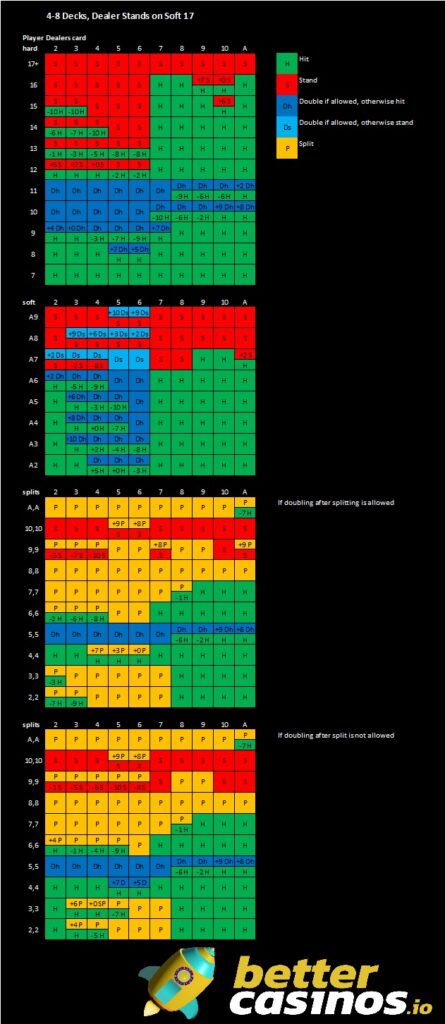A Practical Guide on How To Win at Online Blackjack
In earlier articles I’ve talked about the basics of blackjack and basic strategy, as well as briefly touching on card counting. In this article I’ll give you more specific, hands-on advice that will help you win more at the table. It might get a bit technical at times, but I’ll try to keep it as simple as possible. Check out my Basic Blackjack Strategies or Advanced Black Jack Strategies for more info!
The Omega II Card Counting System
Card counting is essential to erase the house edge and hopefully get it into the negative. On Better Casinos I wrote an article about Counting Cards at Online Blackjack. I prefer using the Omega II card counting system. It’s very similar to the most popular system out there, Hi-Lo. Omega II is a bit harder to learn and use than Hi-Lo but has slightly better results. In online blackjack every little bit helps, so we’ll take what steps we can to improve our chances.
The card values in Omega II are:
2,3 +1
4,5,6 +2
7 +1
8 0
9 -1
10, J, Q, K -2

Only use insurance on true counts of +6 or above.
Practical Advice for Online Blackjack
- Hand #: most shoes are 35 hands or less, so making room for 40 hands in your sheet should be enough.
- Running count: This is where you enter the current running count.
- Cards dealt: Keep track of the # of cards dealt here. If you estimate the number of cards dealt instead you can remove this field.
- Decks left: ((8 * 52) – cards dealt) / 52; either you count the cards dealt to get an accurate value or use (6 * hands played) instead of cards dealt as an approximation. If the game you play has a different number of decks in it than 8, change the 8 to the actual number.
- True count: Running count / decks left
- Aces dealt: Just add the number of aces dealt.
- Ace count: (# cards dealt / 13) – aces dealt; substitute cards dealt with (6 * hands played) if you’re not counting cards played, just as in the decks left formula.
What Expectations Should You Have?
Words of Caution
In the end blackjack is just a game and you should play it for fun, not with the expectation that you are guaranteed to make money out of it. But the information above should at least let you play for way longer than if you don’t know how to play well.
We wish you the best of luck, see you in the next one!



